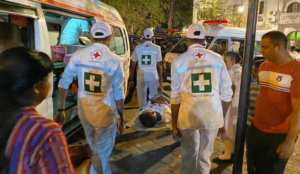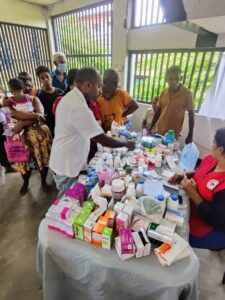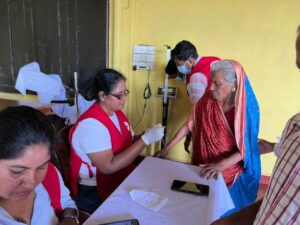Health & Care
Welcome to the Sri Lanka Red Cross Society’s dedicated page on the health situation in Sri Lanka. In this section, we aim to provide an overview of the prevailing health landscape, highlighting key challenges, initiatives, and our collective efforts towards promoting better health outcomes for all.
Sri Lanka faces a myriad of health challenges, ranging from communicable diseases to non-communicable diseases (NCDs), exacerbated by socio-economic disparities, limited access to healthcare in remote areas, and environmental factors. Communicable diseases such as dengue fever, malaria, and tuberculosis continue to pose significant threats, while NCDs like diabetes, cardiovascular diseases, and cancer are on the rise, placing a burden on both individuals and the healthcare system.
COVID-19 Pandemic Response: The COVID-19 pandemic has further strained the healthcare infrastructure and resources in Sri Lanka. The Sri Lanka Red Cross Society, in close collaboration with governmental and non-governmental partners, has been actively involved in the pandemic response efforts. From providing essential medical supplies and personal protective equipment (PPE) to supporting vaccination drives and community awareness campaigns, we remain committed to mitigating the spread of the virus and supporting those affected by its impact.
Promoting Health Equity and Access: Ensuring equitable access to healthcare services remains a priority for the Sri Lanka Red Cross Society. We work tirelessly to bridge the gap between underserved communities and essential health services through mobile clinics, health education programs, and community outreach initiatives. By empowering communities with knowledge and resources, we strive to enhance health literacy and foster sustainable health practices.
Building Resilience and Preparedness: Building resilience and preparedness are fundamental pillars of our health interventions. Through capacity-building programs, disaster preparedness training, and the establishment of early warning systems, we aim to strengthen the community’s ability to respond to health emergencies effectively. By fostering a culture of resilience, we endeavor to minimize the impact of health crises and ensure swift, coordinated responses when disasters strike.
The health situation in Sri Lanka is complex, but with concerted efforts and collaboration, we can overcome these challenges and create a healthier, more resilient nation. The Sri Lanka Red Cross Society remains steadfast in its commitment to promoting health, preventing disease, and alleviating suffering. Together, let us continue our journey towards a healthier, more equitable future for all Sri Lankans.
For more information on our health programs and initiatives, please contact us


